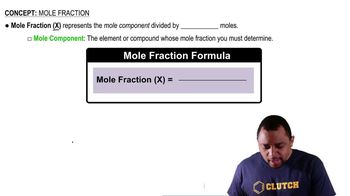Here are the essential concepts you must grasp in order to answer the question correctly.
Le Chatelier's Principle
Le Chatelier's Principle states that if a dynamic equilibrium is disturbed by changing the conditions, the system will adjust itself to counteract the change and restore a new equilibrium. In the context of temperature changes, if the reaction is exothermic, increasing the temperature shifts the equilibrium position to favor the endothermic direction, which in this case would be the formation of reactants.
Recommended video:
Equilibrium Constant (Kp)
The equilibrium constant (Kp) for a reaction at a given temperature quantifies the ratio of the partial pressures of products to reactants at equilibrium. For the reaction PCl₃(g) + Cl₂(g) ⇌ PCl₅(g), Kp = 0.0870 indicates that at equilibrium, the concentration of PCl₅ is relatively low compared to the reactants. Changes in temperature can alter the value of Kp, affecting the equilibrium position.
Recommended video:
Equilibrium Constant Expressions
Mole Fraction
Mole fraction is a way of expressing the concentration of a component in a mixture, defined as the number of moles of that component divided by the total number of moles of all components. In this reaction, the mole fraction of Cl₂ will change as the equilibrium shifts in response to temperature changes, impacting the overall composition of the gas mixture in the flask.
Recommended video:




